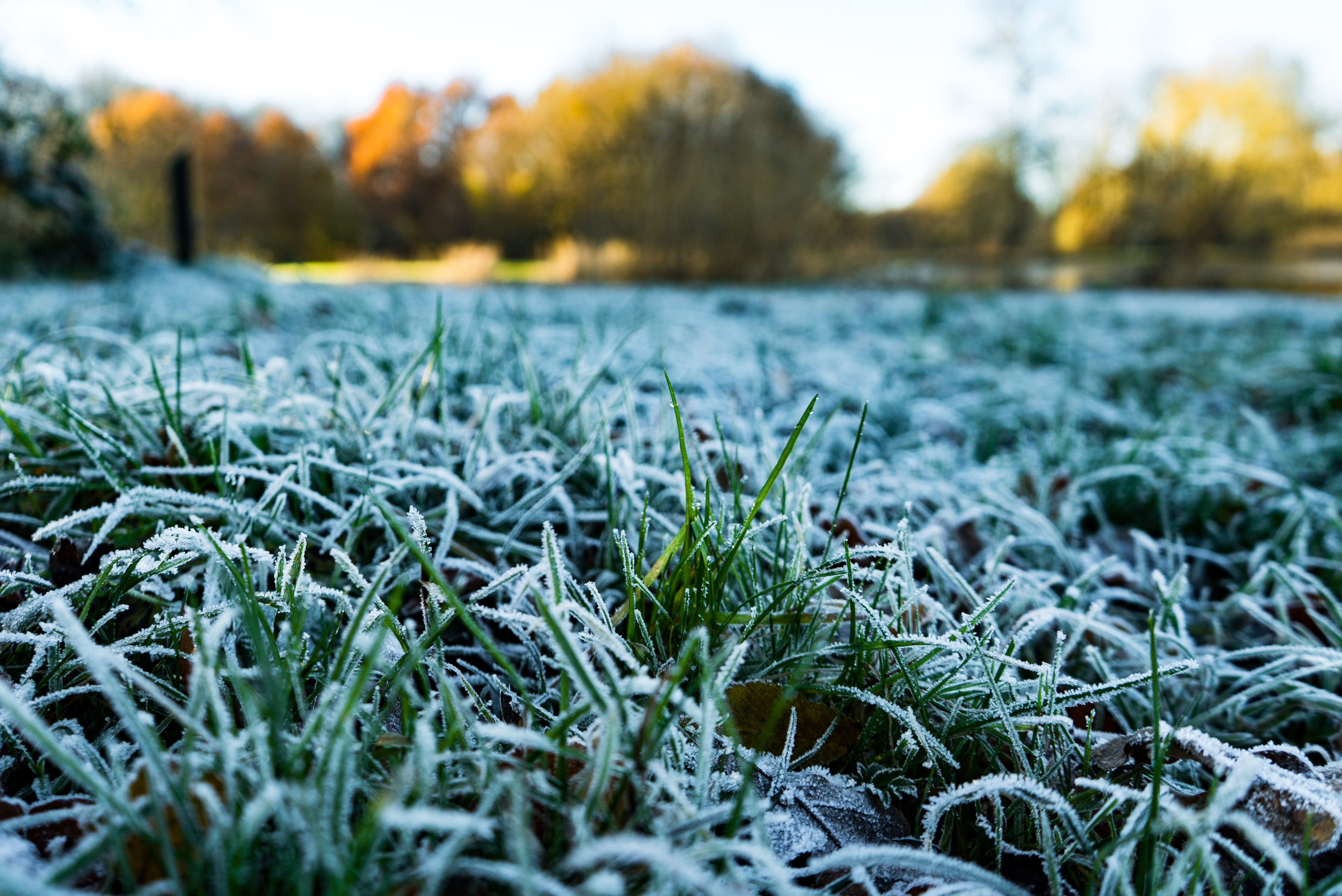After the dog days of summer have ended, and the fall leaves have blown away, winter brings its own unique challenges for maintaining turf.
If you are responsible for keeping turf green and healthy all year long at a golf course, sports field or other commercial site, you have likely experienced damage from frost tracking. Find out what frost tracking is and how to prevent it from damaging your turf below.
What is frost damage?

Frost on turfgrass happens when temperatures dip below 32 degrees Fahrenheit and water within the blades of grass freezes. While frost itself does not harm turfgrass, traffic on frozen grass can cause serious damage.
“When people walk across frozen turf it compacts the blade, which allows ice crystals to puncture the cell walls and the plant dies,” said Tony Goldsby, Ewing’s National Turf Products Manager.
You can spot frost damage to your turfgrass by the white or beige discoloration that takes place. The grass that has been damaged could potentially be irreparable and may need to be replaced entirely when spring rolls around.
How to prevent frost damage
Preventing damage from frost tracking can be difficult depending on how your turf is used.
If you are managing a sports field or golf course, it is best to work to delay any activity on the grass until the frost has melted.
“Quite often during this time of the year you will see golf courses with frost delays or sports fields where managers request no traffic on frosted turf,” said Goldsby. This is because the best way to avoid damage to frosted turf is to avoid traffic on it.
If you can’t prevent people from stepping on the frosted grass, here are a few things you can do to give your grass its best chance of fighting the frost:
- It might seem counterintuitive, but watering your grass the night before an expected frost will help keep your lawn warm and prevent damaging frost. The moisture evaporation that occurs after watering causes friction, raising the base temperature of the grass preventing frost.
- Protect grass crowns by leaving the blade length longer when mowing.
- Don’t mow your turf right before an expected frost. Mowing can cause damage to the turf and may leave it more susceptible to frost damage.
- Rake up any dead grass from previous frosts to avoid excessive thatch.
How to treat frost damaged turf
If your lawn has already been damaged by frost, you can try to rehydrate the turf by watering it in the morning. Also, be sure to wait to fertilize your grass for up to a month after frost. Why? The extra nitrogen from the frost can cause additional damage.
If the grass is still damaged, you may need to reseed once temperatures rise in spring.
Have you experienced frost tracking or other winter issues with your turfgrass? How do you protect your turf? Let us know in the comments below.




